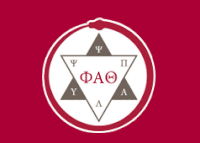Abstract
Immigration became a constant in Irish life following the Great Famine of the 1840s and 1850s, continuing steadily over the course of over 150 years and only stabilizing within the last 60 years. Although in previous eras Irish return migrants faced a great deal of difficulty and criticism upon their homecoming, in recent decades returnees have continued to repatriate - with fewer external obstacles and greater accessibility to home than before. While the internal obstacles of the return migrant persist, adaptation back into Irish life has become easier with frequent return trips, close personal connections at home, and a determination to be an active part of the community. Changes in communication and technology in the second half of the twentieth century have facilitated easier return experiences and fostered more positive interactions between returnees and non-emigrants. As a result, the way twenty-first century Irish talk about emigration and return has shifted to acknowledge the important role return migrants play in Irish economic and cultural life and development.
Recommended Citation
Walsh, Brittany
(2016)
"“A Question of Adapting”: Mediating Return Migrant Identity in Twentieth and Twenty-first Century Ireland,"
Voces Novae: Vol. 8, Article 7.
Available at:
https://digitalcommons.chapman.edu/vocesnovae/vol8/iss1/7


